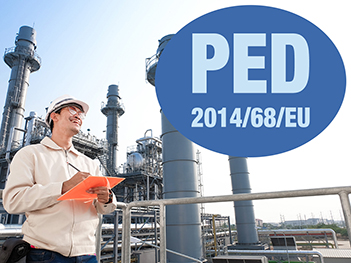 PRIMIX spends in its communication a lot of attention to new applications of static mixers and heat exchangers. This provides insights into solutions for special and challenging processes and enhances the transfer of knowledge, which helps to further develop certain fields of application. In addition to an application-oriented sharing of knowledge PRIMIX would also like to inform you about general issues and developments in the market. For this purpose PRIMIX will release a series of news items, which will start with the following article about the significance and change of the Pressure Equipment Directive (PED), this in relation to the manufacturing and application of static mixers.
PRIMIX spends in its communication a lot of attention to new applications of static mixers and heat exchangers. This provides insights into solutions for special and challenging processes and enhances the transfer of knowledge, which helps to further develop certain fields of application. In addition to an application-oriented sharing of knowledge PRIMIX would also like to inform you about general issues and developments in the market. For this purpose PRIMIX will release a series of news items, which will start with the following article about the significance and change of the Pressure Equipment Directive (PED), this in relation to the manufacturing and application of static mixers.
European Union directives
In the manufacture and application of pressure components, such as static mixers, almost always the European "PED Directive" is applicable. If components and/ or equipment belong to category I, II, III or IV a CE marking should be applied on the product, as a part of the PED and other applicable design guidelines. When a product falls outside of these four categories (also called an Article 4.3 product), it is not permitted to affix a CE marking on the static mixer.
How do you distinguish – with or without CE marking?
If the process pressures are relatively low and the substances to be mixed are not toxic, flammable or chemically reactive, in general it can be stated that a static mixer is a category 4.3 product. In this situation the application of a CE mark is not allowed. In other situations, this should be done. However, it is essential for every situation that the classifications and guidelines on the directive page of the European Union website are closely looked at. Please refer to Chapter 3 - Article 13 and 14 (scroll down on the page). If required please contact PRIMIX for support on this assessment.
Changes in the Pressure Directive
As stated above almost all static mixers are covered by the PED Directive. This directive has been changed on May 15, 2014 from the PED Directive 97/23/EC to the PED Directive 2014/68 /EU. By an earlier adjustment in the Dangerous Substances Directive, Article 13 has become effective earlier, on June 1, 2015. The other regulations within the PED Directive 2014/68/EU will officially be effective on July 19, 2016.
What does this mean for static mixers?
Most changes in the Directive will have a very limited impact on the daily practice of manufacturing and the application of static mixers. However, we have detailed below a number of potentially relevant changes.
Article 3.3 is now 4.3
Where formerly the qualification "Sound Engineering Practice (SEP)" was referred to in “Article 3 paragraph 3" this is now stipulated in the new directive under "Article 4 paragraph 3". Some of our clients noticed the change from 3.3 to 4.3 as a mistake, but that is not the case!
Adjustment in the definition of responsibilities
Because the old PED directive did not specify exactly who could be classified as a manufacturer, the new PED Directive 2014/68/EU now incorporates the term “economic operators”. With this the responsibilities are better defined for operators in the supply chain such as the manufacturer, the legal representative, the importer and distributor. This allows for a further definition of the relationships and minimizes the risk of different interpretations of the responsibilities within the supply chain.
More information about the PED rules and static mixers
For more information about the PED regulations, in relation to your static mixer application, please contact PRIMIX or your local PRIMIX partner.

 English
English  Deutsch
Deutsch  Español
Español  Français
Français  Nederlands
Nederlands